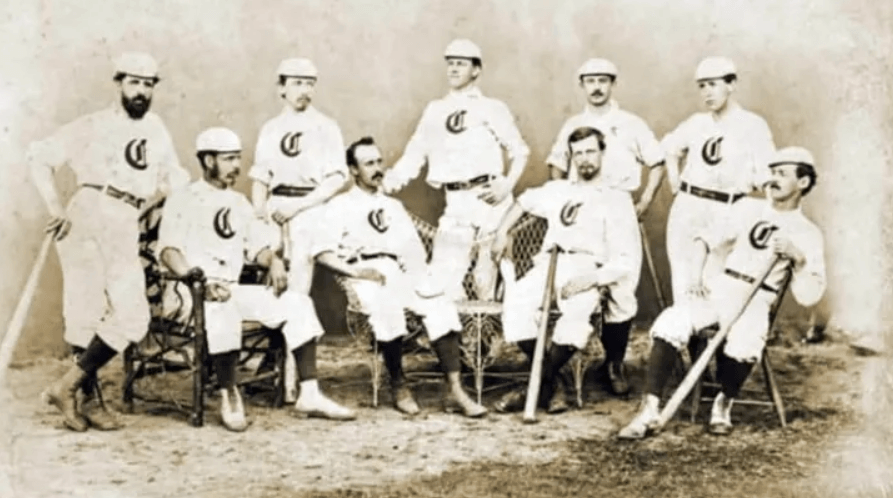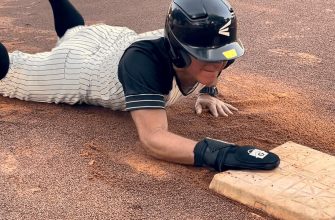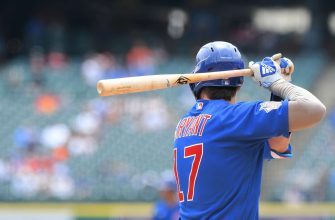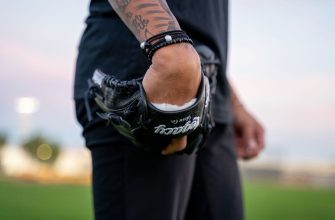Baseball stirrups may seem like a small detail, but they have a surprisingly rich history and play an important role in the game. Stirrup socks first emerged in professional baseball in the 1860s and became widely popular by the 1900s. For decades, stirrups were a staple look for ballplayers and helped define the classic baseball uniform.
Though they fell out of favor in MLB during the 1990s, stirrups have recently made a comeback thanks to a new generation of players embracing the old-school style. With over 150 years of tradition behind them, baseball stirrups connect today’s game to its earliest beginnings. Their staying power proves these striped socks are about more than just fashion – they’re an integral part of America’s pastime.
Origins of Baseball Stirrups

Baseball stirrups first appeared in the early 20th century, around the 1910s and 1920s according to several sources. At this time, baseball uniforms consisted of baggy wool pants that players would tie around the ankles. To hold the pants in place and keep them from becoming untucked, players started wearing socks with loops at the bottom that would go under the arch of the foot. These loops evolved into the stirrup design we know today.
The exact origins are unclear, but some credit the Cincinnati Red Stockings in the 1910s as potentially pioneering the stirrup look in Major League Baseball. Other sources point to the Chicago White Sox and New York Yankees adopting stirrups in the late 1910s and popularizing them more widely. The iconic Yankees pinstripe uniform with matching stirrups became one of the most recognizable looks in baseball during the 1920s and 30s.
So while the exact genesis is uncertain, baseball stirrups clearly emerged as a functional garment in the early 20th century before becoming a staple of baseball uniforms for decades to come. Their longevity speaks to both their utility for players and their nostalgic baseball aesthetic.
Purpose and Function
Baseball stirrups were originally designed to serve some important functional purposes for players. The main practical functions of stirrups are to keep socks up and prevent blisters on players’ feet and ankles.
Stirrups help keep socks from falling down during play. Long socks bunching around the ankles can be very uncomfortable and distracting for players. Stirrups act as garters to hold up socks securely so players can focus on the game. The strap under the arch of the foot anchors the stirrups and socks in place.
Stirrups also help prevent painful blisters from forming on players’ feet and ankles. Friction from socks moving around can cause irritation and blisters. By keeping socks in place, stirrups protect players’ skin from rubbing and reduces blistering. The smooth fabric of the stirrups themselves also cuts down on abrasion.
While stirrup style has evolved over the decades, these core practical functions remain important reasons why baseball players at all levels continue to wear stirrups today. The maintenance of mobility and protection from blisters provided by stirrups gives players comfort and confidence on the field.
Distinctive Look

Baseball stirrups have long been an iconic part of the traditional, old-school baseball uniform. The stretchy socks with stripes at the bottom have a distinctive vintage aesthetic that hearkens back to the earliest days of the sport.
Unlike long pants that cover the legs entirely, stirrups leave several inches of exposed skin between the bottom of the pant leg and the top of the sock. This highlights the bold stripes and colors of the stirrup in a way that full pants do not. The eye-catching stripes wrapping around the calves give baseball uniforms a truly classic look on the field.
In many cases, the stirrup stripes match other uniform elements like the trim on the jersey or hat. This creates a pulled-together, heritage style look across the whole uniform when stirrups are worn. The patterns and designs found on stirrups are an integral part of showcasing team pride and identity.
Stirrups also represent baseball history and tradition in a way few other uniform elements can match. They bring to mind images of legends like Babe Ruth, Ted Williams, and other greats memorialized in their knickers and stirrup socks. The nostalgic style carries important cultural meaning and symbolism for many fans and players alike.
Variation in Styles
Baseball stirrups come in a wide range of styles and designs. Each MLB team has their own stirrup style that incorporates their official team colors and logos. For example, the Boston Red Sox stirrups are navy blue with red stripes, matching their official team colors. Individual players can also choose variations based on their personal preference.
Some players like higher stirrups that show more of their calf, while others prefer the “old school” look of full low stirrups. Stirrup length, stripe pattern, and color variations help make each player’s and team’s look unique. The evolution of stirrup styles over decades of baseball history is a visual representation of changing fashions and innovations in sportswear design. While honoring tradition, today’s MLB players put their own spin on stirrup style.
Stirrup Technology

The materials and construction of baseball stirrups have evolved over the years along with changes in athletic apparel technology. Early stirrups were made of wool or cotton, which absorbed sweat and moisture. Modern stirrups are constructed from synthetic moisture-wicking fabrics like polyester and spandex blends. These fabrics keep players’ legs dry by pulling sweat away from the skin.
The stretch and fit of stirrups has also improved thanks to elastic materials like lycra. Stretch allows stirrups to conform to the shape of the leg rather than sagging or binding. Manufacturers design stirrups specifically for the movements of baseball to prevent bunching or restricting mobility. Well-fitted stirrups allow full freedom of motion when running the bases or fielding ground balls.
Stirrups come in a range of standardized sizes like small, medium and large. But some brands offer customizable sizing options for an ideal personalized fit. Adjustable stirrups with velcro or snap closures ensure players can dial in the perfect fit. Proper sizing enhances comfort and avoids distractions when playing.
Use in Youth and Amateur Baseball
Baseball stirrups have been a staple of youth and amateur baseball uniforms for generations. However, their use has declined in recent years as major league clubs have moved away from the stirrup look.
Stirrups remain fairly common in Little League and other youth divisions. Many teams still wear the classic ensemble of pinstriped pants, stirrups, sanitary socks, and cleats. For young players just learning the game, stirrups can provide a tangible connection to the sports’ roots and history. The joy of pulling up those stirrups and becoming a real ballplayer is a rite of passage for many.
At upper levels like high school and college, stirrups are less ubiquitous today. But they have not disappeared entirely. Some amateur programs proudly uphold the tradition, and certain schools are known for their stirrups as part of their uniform identity and heritage.
It’s hard to say if stirrups will continue fading from youth and amateur baseball or make a comeback. But they remain ingrained as a nostalgic piece of baseball’s past and are still part of the experience for many young players. Their fluctuating prevalence in youth leagues and schools highlights their complex status – neither gone from the game completely, but no longer a constant presence as they once were.
Cultural Significance

Baseball stirrups are an iconic part of the history and tradition of the sport. Although less common today, for decades they were a standard part of the baseball uniform, giving the sport a distinctive aesthetic. Stirrups first emerged in the late 1800s and became popular as baseball grew as America’s pastime in the early 20th century. They were worn by legends like Babe Ruth, Lou Gehrig, and Joe DiMaggio.
For fans and players, stirrups represent the nostalgia of baseball’s golden era. The images of pinstriped uniforms with high stirrups are engrained in baseball history. They maintain connections to the past and baseball’s roots as a sport. As cultural symbols, stirrups are associated with ideals like teamwork, integrity, and wholesomeness that baseball has represented through the generations.
Even as styles have evolved, stirrups are still worn in youth and amateur leagues to uphold tradition. Some Major League teams like the St. Louis Cardinals feature throwback uniforms with retro striped stirrups for occasions honoring their history. For fans and players alike, the persistence of stirrups maintains important cultural links to the past and the essence of baseball.
The Future of Baseball Stirrups
In recent years, there has been a debate about whether baseball stirrups will continue to be worn by players in the future. Some have argued that stirrups are an outdated relic and their usage is in decline, especially among younger players who prefer longer, loose-fitting pants. However, stirrups have seen a bit of a resurgence in popularity in the last few MLB seasons, with some players choosing to wear them as a nod to baseball tradition and history.
It’s hard to say definitively whether stirrups will continue to be worn in the coming decades. On one hand, they provide less ankle support and freedom of movement compared to modern baseball pants. But on the other hand, they offer a classic, distinctive look that many fans and players appreciate. Stirrups also remain very popular at the youth and amateur levels.
As long as baseball tradition remains an important part of the game’s culture, stirrups will likely maintain a niche among a subset of players, even if they never return to the widespread popularity they once enjoyed. Their future likely depends on whether each new generation of players values baseball history and wanting to pay homage to the past.
Conclusion
Baseball stirrups emerged in the late 19th century as part of the baseball uniform to help distinguish teams and cover up long wool socks. Over the decades, stirrups became an iconic part of the classic baseball look, with distinctive stripes and styles representing each team’s colors and aesthetics. While stirrup use has declined in recent decades with the introduction of synthetic socks, they remain an important symbol of baseball tradition and culture.
For over a century, stirrups have served both functional and stylistic roles in America’s pastime. Their legacy lives on through the iconic uniform designs of legendary players and teams in baseball history. Though evolved in style, stirrups remain a visual symbol of the spirit of the game. As long as baseball is played, the distinctive look of stirrups will continue to represent the traditions and heritage that make baseball America’s favorite sport.








